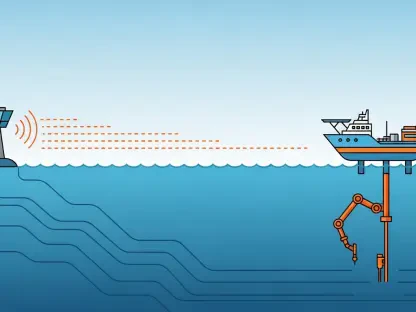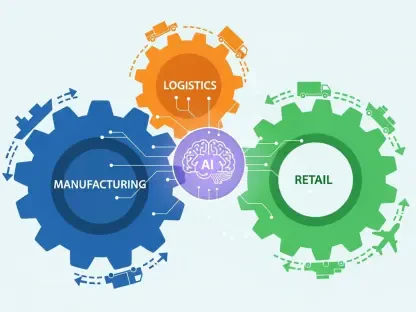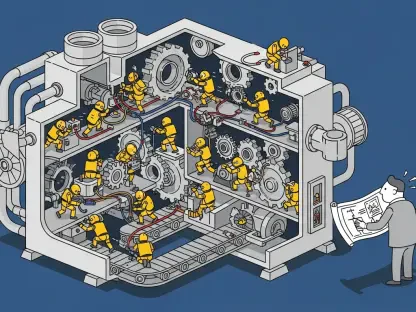Laurent Giraid has spent years at the intersection of AI systems and the guardrails that make them safe and useful. Today, he’s focused on helping enterprises move beyond proofs of concept to production, where resilience, security, and governance determine real outcomes. In this conversation, we explore how fresh funding fuels execution, why recognition in Agentic AI TRiSM matters, and what it actually takes to cut “time-to-trust” from months to weeks. We cover lessons from customers, reinforcement learning on production telemetry, runtime governance, and how veterans who built large-scale AI infrastructure translate that experience into a modern platform for trusted agents.
Key themes we dig into include: translating capital into near-term milestones; designing “intrinsic resilience” with reinforcement learning; reducing operational risk while speeding time-to-value; using observability to continuously harden agents; and turning analyst validation and investor support into concrete enterprise playbooks. You’ll hear practical guidance on rollouts, failure modes, runtime policy enforcement, and a pragmatic 30-60-90 plan to reach production trust.
You just raised $17M led by BrightMind, bringing total funding to $23M—what specific milestones will this bankroll in the next 12 months, and how will you sequence hiring, product hardening, and go-to-market? Share target metrics, timelines, and an anecdote from the round that shaped your plan.
The $17M lets us double down on the core promise: get enterprises from experiments to production-grade agents with confidence. We’re prioritizing product hardening first—deepening our build-test-deploy loop and expanding reinforcement learning on production telemetry—then layering go-to-market so we don’t outpace support. Hiring is sequenced toward platform engineering and security reviews before anything else; sales and ecosystem roles follow once those foundations are locked. One moment from the round that shaped our plan came when an investor asked us to walk through how an agent goes from six months to six weeks—step by step. Replaying that timeline forced us to commit to measurable gates and to resource the teams that own those gates before we lean into scale.
Vijil was named a Gartner Cool Vendor in Agentic AI TRiSM—what criteria or customer outcomes do you think tipped the scales, and how are you translating that recognition into enterprise playbooks? Walk us through concrete examples, proof points, and any internal KPIs tied to this.
I believe two things mattered: intrinsic resilience built from production telemetry, and the breadth of the platform from development to operations. Customers like SmartRecruiters demonstrated that you can cut “time-to-trust” by 75%, moving from six months to six weeks while lowering compliance costs—those outcomes speak for themselves. We’ve translated that into playbooks that map build-time hardening, test matrices for reliability and security, and runtime governance checks aligned to TRiSM best practices. Internally, we track adoption of hardened components across deployments and the percentage of incidents caught by runtime policies before they reach end users. The Cool Vendor nod is validation, but our real KPI is whether teams ship trusted agents faster and with fewer surprises.
SmartRecruiters cut “time-to-trust” by 75%, going from six months to six weeks—what exact steps made that leap possible, and where did the biggest gains come from? Break down the workflow changes, validation gates, and any metrics that surprised your team.
The leap came from compressing cycles across three gates: build hardening, pre-deploy testing, and runtime governance. In build, we packaged hardened components so teams didn’t reinvent safety policies every time. In test, we ran reliability and security suites that mirrored live conditions, which let us catch tool misuse and prompt injection before go-live. At runtime, we enforced policies in-line and learned from telemetry, which closed the feedback loop. The surprise was how much time fell out simply by standardizing attestations—what once took months of manual reviews turned into a predictable, weeks-long track because the artifacts were ready when auditors asked.
You emphasize “intrinsic resilience” via reinforcement learning on production telemetry—what signals do you capture, how do you label or shape rewards, and how often do you retrain? Give a step-by-step example, including failure cases, guardrails, and measurable improvements.
We capture signals like tool call outcomes, policy hits, user corrections, and incident near-misses—pragmatic breadcrumbs from real usage. Rewards are shaped around risk reduction and task success, so a safe, correct completion scores higher than a fast but brittle one. A typical loop looks like this: deploy an agent with guardrails, observe where it hesitates or oversteps, label those episodes automatically with policy outcomes, and update behaviors to prefer patterns that avoided policy violations. Failure cases we’ve seen include brittle prompts that invite injection or tools invoked out of order; guardrails prevent unsafe actions, while the learner promotes sequences that pass policy checks. Over time, we see measurable improvements like fewer policy escalations and a consistent march from months to weeks in “time-to-trust.”
Your platform spans build, test, deploy, and continuously improve—how do the modules hand off artifacts and policies across stages to preserve trust? Describe the end-to-end path of one agent, including hardened components, test suites used, and runtime governance checks.
An agent starts in build with hardened components—policy-aware prompt templates, vetted tool wrappers, and identity bindings. Those artifacts flow into testing, where reliability and security suites replay realistic tasks and adversarial prompts; the outcomes produce attestations that travel with the agent. At deploy, policies are enforced in-line and linked to those attestations so operations has provenance on every decision path. The “continuously improve” loop then consumes operational telemetry and updates the hardened components for the next build cycle. The throughline is traceability—every stage inherits and strengthens the trust fabric rather than resetting it.
Enterprises cite reliability, security, and governance at scale as blockers—where do rollouts usually stall, and what playbooks unblock them? Share a detailed case, including stakeholders involved, change management steps, and before-and-after risk metrics.
Rollouts often stall at the handoff between testing and operations, where ownership gets fuzzy and risk appetite shrinks. In one deployment, engineering, security, and compliance met weekly to align on artifacts: hardened components, test results, and runtime policies. We clarified who approves what, when, and with which evidence, so go-live wasn’t a negotiation each time. After instituting that cadence, incidents requiring manual escalation dropped, and the audit trail moved from ad hoc documents to standardized attestations. The result was a smoother path from six months to six weeks without compromising governance.
You highlight learning from observability data—what data schema, sampling strategy, and retention policy have proven most effective, and how do you prevent drift or bias amplification? Provide concrete thresholds, alerting rules, and a story of a course correction.
We keep the schema simple and action-oriented: request, policy context, tool interactions, outcomes, and post-hoc labels. Sampling prioritizes episodes with policy hits or user corrections so we learn fastest where risk hides. Retention focuses on windows that inform the reinforcement learner and audits, keeping what’s necessary for continuous improvement and compliance while minimizing noise. Alerting kicks in on spikes in policy violations or sudden shifts in tool failure patterns—those are early drift signals. We once saw a rise in near-misses tied to a prompt pattern; the alert triggered a review, the pattern was hardened, and subsequent violations returned to baseline.
BrightMind, Mayfield, and Gradient backed you—how are these investors shaping product and partnerships, and what measurable outcomes do you expect from their networks? Give examples of intros, co-selling motions, or technical reviews that moved the needle.
Their biggest impact is focus and access. Product-wise, they pushed us to double down on reinforcement learning from telemetry and to keep the platform modular so customers can adopt it in steps. On the go-to-market side, they’ve opened doors to customers and partners who care deeply about trust in AI agents, which accelerates learning cycles. Technical reviews have sharpened decisions about runtime governance and how to present attestations in a way that auditors actually use. The proof is in customers moving faster from proof of concept to production—with the same trust bar they hold for other critical systems.
Your team includes veterans who built AI infrastructure at AWS—what practices from that experience made it into Vijil, and what did you deliberately leave behind? Share a war story, specific design choices, and the metrics you use to validate those choices.
We brought forward the discipline of building for failure and assuming production realities will test every abstraction. That means policy enforcement as code, strong identity boundaries, and an obsession with operational telemetry. What we left behind is the tendency to overfit to a single environment; we designed Vijil to be modular so it slots into varied enterprise stacks. A war story from the past taught us that unmanaged changes in one layer can cascade—so we built traceability into every artifact and policy. We validate choices by watching incident trends and “time-to-trust,” aiming for the same six-week pattern that customers like SmartRecruiters achieved.
You claim reduced operational risk and shorter time-to-value—how do customers quantify ROI, and what benchmarks should executives expect in quarters one, two, and three? Walk through the dashboard metrics, target ranges, and a customer cohort analysis.
ROI shows up where time and risk intersect. Executives watch dashboards for “time-to-trust,” policy violation rates, and the share of incidents resolved by in-line governance versus manual intervention. Early cohorts that anchor on hardened components and standardized attestations reach the weeks-long timeline faster and see fewer escalations. Over successive quarters, the trend we want is shrinking manual overhead and steadier governance outcomes. It’s a compounding effect—each cycle improves the next because the learning loop has better data to work with.
Governance at runtime is central—what policies do you enforce in-line, what do you quarantine or defer, and how do you audit decisions post hoc? Detail the policy hierarchy, escalation paths, and a real incident that informed your current defaults.
We enforce safety and identity policies in-line because they guard the core; if a request conflicts with those, the action is blocked or redirected. Ambiguous cases get quarantined for human review, and low-risk deferrals are logged for batch analysis. The hierarchy prioritizes safety, then security, then performance, with clear escalation to compliance when a pattern triggers repeated hits. After one incident where ambiguous prompts slipped through a non-blocking check, we moved that policy up the stack and required stronger attestations at deploy time. The audit trail ties decisions back to artifacts so post-hoc reviews are grounded in evidence, not guesswork.
Compliance costs dropped for SmartRecruiters—where exactly did savings come from: fewer manual reviews, faster attestations, or reduced incident handling? Break down the cost model, show sample numbers or percentages, and explain the steps to replicate this elsewhere.
The savings were a blend: fewer manual reviews, attestations ready when auditors asked, and a steady decline in incident handling. When you move from six months to six weeks, you eliminate multiple cycles of rework and the holding pattern that chews up team time. The cost model shifts from bespoke, per-release checks to standardized evidence that flows through build, test, and deploy. To replicate this, start with hardened components, adopt the test suites that mirror live risk, and wire runtime governance so it produces audit-ready trails by default. The percentage that stands out is the 75% cut in “time-to-trust,” and the cost curve follows that time savings closely.
You “continuously harden” agents—how do you decide when an agent is ready for production versus in “learning mode,” and how do you roll back safely? Describe promotion criteria, canary strategies, SLOs, and a rollback story with lessons learned.
Promotion hinges on passing reliability and security tests, clean policy runs, and attestations that show readiness for real workloads. We often start with a canary—limited scope, tight monitoring, and clear SLOs so deviations are obvious. If signals degrade or policy hits spike, rollback is a button, not a project, because artifacts and policies are versioned. In one case, a canary surfaced tool misuse tied to a subtle prompt change; rollback was immediate, telemetry explained the drift, and the hardened prompt shipped the next day. The lesson: treat learning mode as a first-class state and make promotion an earned step, not a date on a calendar.
For a new enterprise starting with Vijil, what’s the 30-60-90 day plan to reach production trust? Outline team roles, integration steps, test coverage targets, and the exact artifacts needed at each gate to ship an agent responsibly.
Days 0–30: assemble a cross-functional pod—engineering, security, and compliance—and define one agent’s scope. Integrate hardened components and identity, then set up reliability and security tests that reflect your real workflows. Days 31–60: run the suites, tune prompts and tools, and prepare attestations from test outcomes and policy checks. Days 61–90: canary deploy with runtime governance, watch telemetry, and close the loop by updating components with what you learn. The artifacts at each gate—hardened components, test results, and runtime policy configs—travel with the agent so approvals are crisp and repeatable.
What are the most common failure modes you see in agentic systems—prompt injection, tool misuse, or state drift—and how does Vijil catch them early? Share detection patterns, mitigation tactics, and metrics showing reduced incident rates over time.
We see all three, often intertwined. Prompt injection tries to subvert intent, tool misuse breaks workflows, and state drift erodes reliability over time. Detection starts in test with adversarial prompts and realistic task replays, and continues at runtime with policies that block unsafe actions. Mitigation pairs guardrails with learning—when a pattern triggers policy hits, we update hardened components so the agent prefers safer paths next time. Over time, we’ve watched policy escalations shrink as agents graduate from months-long trust paths to weeks, which is the outcome that really matters.
Your vision frames Vijil as an “infrastructure layer” for trusted agents—what’s on the 12- to 18-month roadmap for deeper partner integrations, SDKs, or policy kits? Provide concrete deliverables, dates you’re aiming for, and how customers can influence priorities.
We’re deepening integrations that make the platform more modular and easier to adopt, expanding SDKs for build-time hardening, and packaging policy kits aligned to TRiSM best practices. The guiding principle is interoperability—meet customers where they are and bring trust along for the ride. We’re pacing these within a 12- to 18-month window so each piece strengthens the others and customers can adopt them in steps. Customers influence priorities through design partnerships and by bringing real workflows that stress the system; those experiences shape what ships next. The endgame is a durable layer that helps any team move from six months to six weeks without lowering the bar.
Do you have any advice for our readers?
Start small, but start with trust. Pick one agent, wire in hardened components and runtime governance, and commit to learning from real telemetry. Bring security and compliance into the room early so approvals aren’t a surprise at the end. And remember what SmartRecruiters proved: when trust is built in from the start, you can go from months to weeks without crossing your fingers at go-live.









